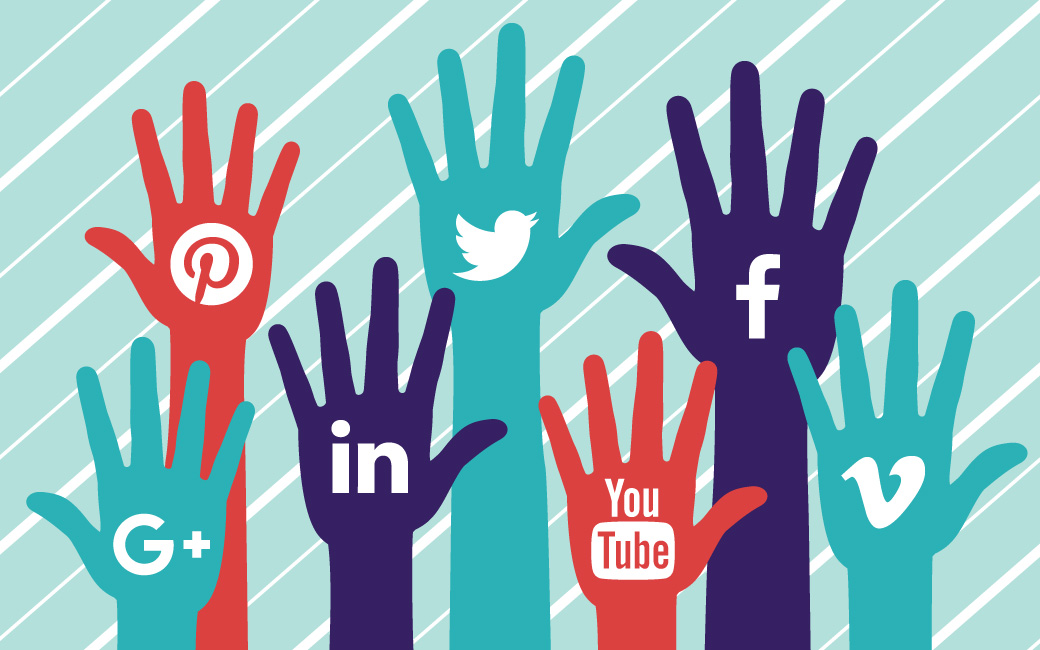Digital Marketing The Ultimate Guide To Choosing Your Top 3 Social Channels
Patrick Foster — July 25, 2018

With a well-planned social media strategy, you have the ability to drive more traffic to your website, optimize your conversion rates, and improve your search rankings. 92% of marketers say that social media is important to their business, and by spending as little as six hours per week, 66% of marketers see lead generation benefits (Source). The trouble is, with so many channels available, which one do you choose? Here we’ve outlined some considerations to help you determine which three social networks will be the most lucrative for your business.
Related reading: Is Your Organization Missing the Digital Marketing Boat?
Tune into your Demographic
Successful social media strategies are determined by brands recognizing where their demographic’s presence is strongest online. To do so, your insights must be derived from data. The more targeted your approach, the higher your chances of conversion.
Social listening tools are invaluable when it comes to assessing your social demographic – and not only who and where they are, but what they’re saying. The subsequent data can highlight which social channels are worth your time, which almost certainly won’t be all of them. According to the Pew Research Center study of social media use in 2018:
- Facebook and YouTube dominate the social media landscape
- 78% and 71% of 18 to 24-year-olds use Snapchat and Instagram respectively
- 68% of US adults are Facebook users
- Pinterest remains substantially more popular with women
- LinkedIn remains especially popular among college graduates
Before you make any decisions regarding which social channels you’ll use, check the demographic data – and don’t be distracted by the latest ‘new thing.’ Bear in mind that despite its age, Facebook remains the most widely used social media platform by a clear margin.
Know your Goals
It’s pointless to use social media unless you know what you want to get out of it. If you can’t articulate your social media goals, focus your time elsewhere. Certain platforms are more suited to particular outcomes, so research them all. If you’re using social media to promote brand awareness, then you’re better off going with a well-established channel that has lots of regular users – nothing too niche. Channels like LinkedIn, on the other hand, are ideal for generating leads through groups and discussions.
On top of this, you can invest in paid advertising, which is an effective way to get your brand in front of a targeted audience – often for less than Google AdWords. Check out Facebook’s advertising options, which tend to offer particularly good ROI. Twitter also has its own advertising platform, with an age demographic skewed toward younger people.
Consider your Content
You can share all sorts of content on social media, and if your company tends to produce one kind over another, you may want to look at where that variety of content is most voraciously consumed. Editorial and written content are ideal for LinkedIn and Medium, where brands and entrepreneurs often work to establish themselves as knowledgeable industry leaders. Likewise, LinkedIn is also widely used to share things like company news and industry white papers.
On the other hand, visual content such as photos and graphics make ideal fodder for Pinterest and Instagram. 93% use the Pinterest platform to plan purchases, according to web builder Shopify. The grid-like layout of Instagram makes it the perfect place to assemble a visual brand story full of aspirational imagery.
If your brand favors video content, it can be repurposed for a range of channels – not just Facebook, Twitter, and Instagram, but also Snapchat, and Periscope. You should also upload everything to YouTube, which has become a search engine in its own right.
Watch your Competitors
As well as looking to your customers, you should also be looking to your competitors. What social media platforms are they most active on? Chances are they’ve done some audience research of their own. Are they getting decent engagement on their channels? Which ones are driving the most engagement? From this, you can form your own conclusions and replicate what works.
As well as assessing which platforms they use, look at the type of content they’re posting – and how often. If you’ve been having little success with text updates, but they’re barrelling along with funny GIFs and videos, maybe it’s time to adopt a similar approach. Free tools like Fanpage Karma, and Klear can help you monitor what your competitors are up to, giving you clearer data to analyze and replicate.
Assess your own Capacity
There is absolutely no need to maintain a steadfast presence on every social media channel. However, for most brands, it’s worth putting effort into at least three – otherwise, you could be missing out on valuable opportunities for growth and visibility.
For an ecommerce business, Facebook’s ad targeting options are second-to-none and a great way to get new customers, but Instagram is also a growing visual channel for ecommerce brands and has been instrumental in growing many fashion and lifestyle brands thanks to its abundance of influencers. For a brand hoping to attract a young demographic, and wanting to make the most of experiential marketing and the offline/online hybrid model, you can’t go wrong with Snapchat’s appeal and younger target audience. Investing money in Twitter and LinkedIn wouldn’t necessarily make sense for an ecommerce lifestyle startup, but Pinterest may be a replacement for Instagram if you’re selling to a slightly older target audience or your brand would benefit from visual content curation in the form of Pinterest boards.
It all depends on the time and resources you have at your disposal. Tools like Hootsuite and Buffer can save a significant amount of time by letting you queue up your posts in one go, so there’s no need to attend each platform individually.
Once you’ve started to discover which social channels work for you, you can build them up gradually before experimenting with new ones.
Hopefully, this guide has provided some insight into what needs assessing before you adopt a social media strategy. What are your top three social channels – and why?
Patrick Foster is a writer and ecommerce expert from Ecommerce Tips — an industry-leading ecommerce blog that offers practical marketing advice so your online store receives the exposure it deserves. Check out the latest posts on Twitter @myecommercetips.



